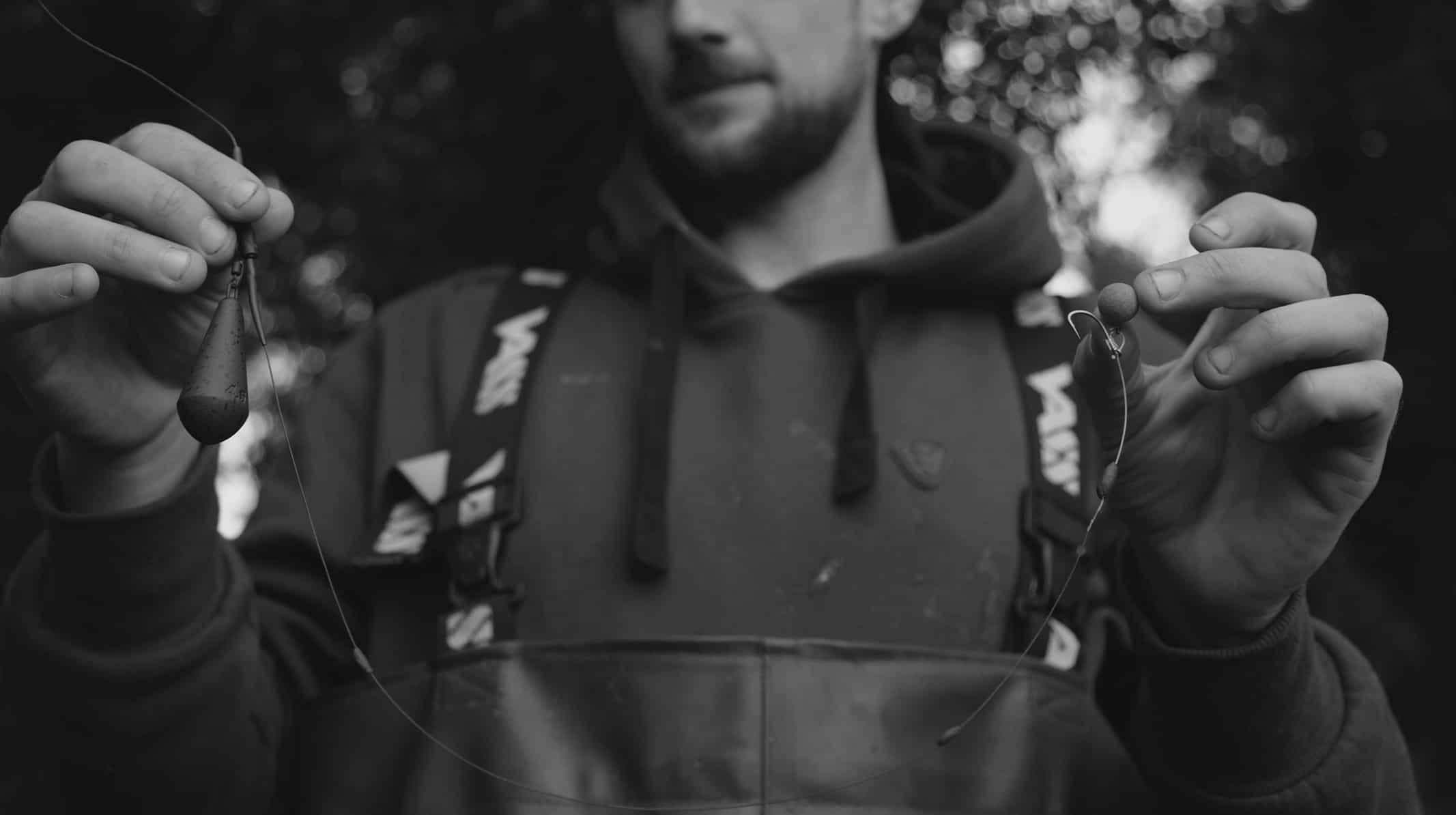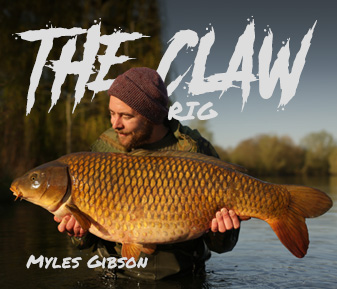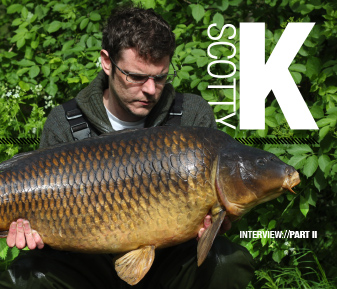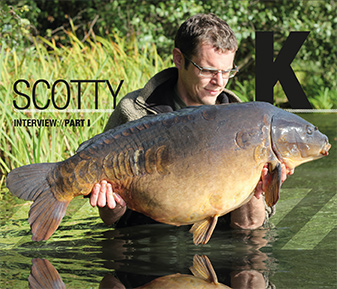Prolific big-fish-angler Myles Gibson runs us through his go-to rig that has seen him catch an obscene amount of big fish in recent years.
Question 1
Mitch, your infectious love for big pits seems to ooze out of you, where did this love affair first start?
My love for big, wild waters began during my two-year stint at the famous Sparsholt College in Hampshire. I moved down there to take on a National Diploma in Fishery Management like a lot of people in the industry these days. Coming from the midlands, the lakes were often very small and even back then had a distinct commercialism to them which never really resonated with me, especially as I grew older.
As I reached 17 years of age and passed my driving test, I was released from the shackles as it were. The thought of big carp in big venues really drew me in and living down in Winchester at the time gave me the freedom to fish some of the best and biggest in the UK. The main one that stuck out to me, as it did to many was the mighty Burghfield. Back then it was much more of an unknown entity, but what was available to read about the place just captivated me.
I wasted very little time and knew I wanted to jump on there, so I purchased a junior ticket for the year for a mere £40. I was buzzing, and eagerly made my first trip to the epicentre of Reading carp angling, only to find the bloody place was frozen over across 90% of the lake! I was so keen at the time that I walked until I found a clear bit and positioned three rods for the night. Unfortunately, I got cut off by a carp on that session, but the bug was well and truly imbedded in me. Plus, where I moved to following my course, the Cotswold Water Park, you don’t really have a choice! It’s big pits, or no pits!
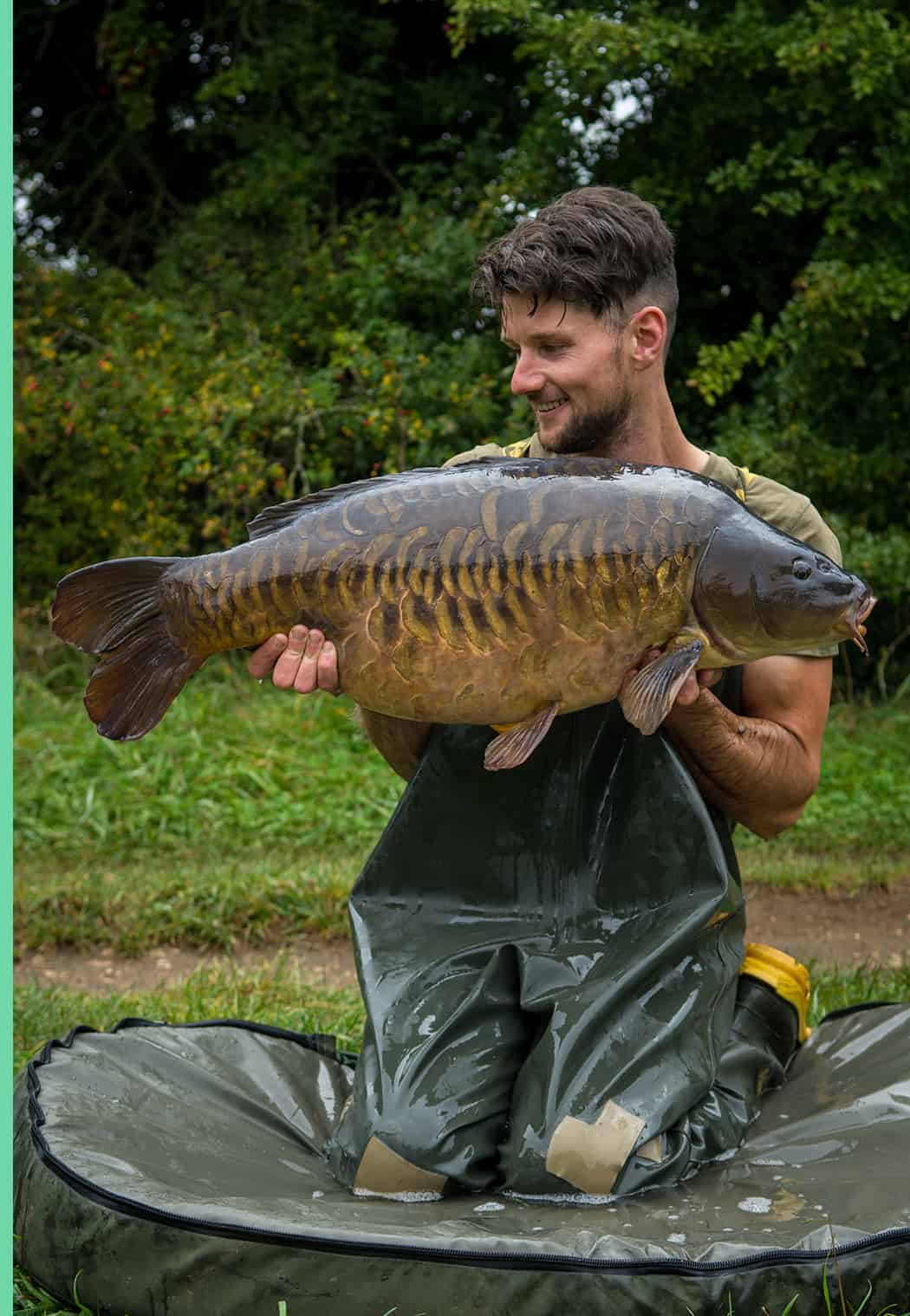
Question 1
Mitch, your infectious love for big pits seems to ooze out of you, where did this love affair first start?
My love for big, wild waters began during my two-year stint at the famous Sparsholt College in Hampshire. I moved down there to take on a National Diploma in Fishery Management like a lot of people in the industry these days. Coming from the midlands, the lakes were often very small and even back then had a distinct commercialism to them which never really resonated with me, especially as I grew older.
As I reached 17 years of age and passed my driving test, I was released from the shackles as it were. The thought of big carp in big venues really drew me in and living down in Winchester at the time gave me the freedom to fish some of the best and biggest in the UK. The main one that stuck out to me, as it did to many was the mighty Burghfield. Back then it was much more of an unknown entity, but what was available to read about the place just captivated me.
I wasted very little time and knew I wanted to jump on there, so I purchased a junior ticket for the year for a mere £40. I was buzzing, and eagerly made my first trip to the epicentre of Reading carp angling, only to find the bloody place was frozen over across 90% of the lake! I was so keen at the time that I walked until I found a clear bit and positioned three rods for the night. Unfortunately, I got cut off by a carp on that session, but the bug was well and truly imbedded in me. Plus, where I moved to following my course, the Cotswold Water Park, you don’t really have a choice! It’s big pits, or no pits!

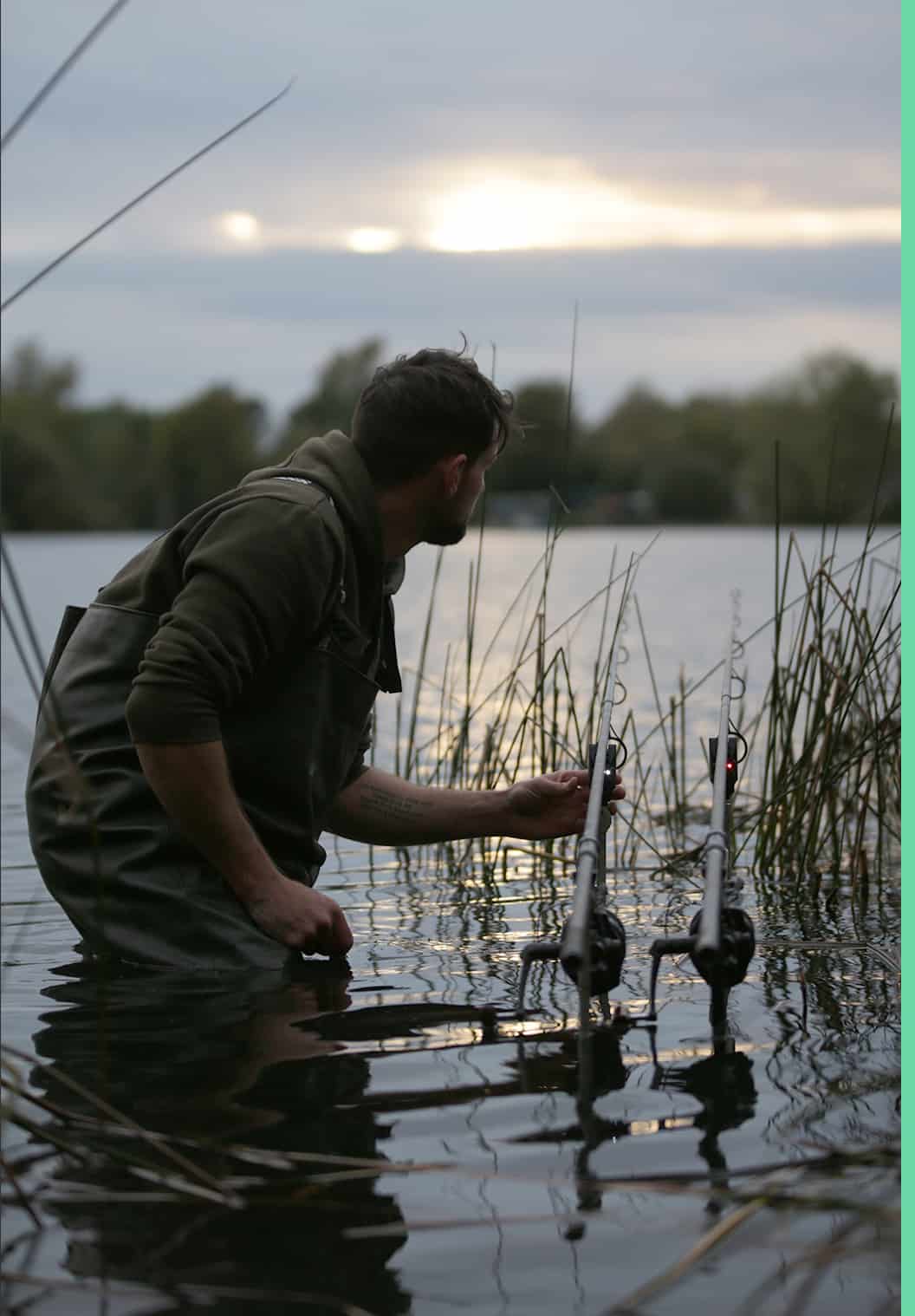
Question 2
By nature, large pits seem to be riddled with perils, having both fished and worked on big pits, what are anglers likely to face when targeting them?
Unlike smaller lakes, which are very often dug out super neatly with a lot of care and attention, large pits tend to be the complete opposite. There’s normally a lot of discarded materials that just get forgotten about and left in the lake from when they were dug. All of which are there when the lakes are flooded and can cause you serious issues. You have to imagine these machines that scrape out the gravel aren’t dainty, anything that may fall off like bits of metal and the like will cause anglers serious problems.
Another thing you really have to pay massive attention to on larger lakes is the weather. On small lakes the weather doesn’t really affect the way you fish but on big pits it is a whole different ball game. You need long pegs for your brolly, storm poles for your rods that are long enough to fish in the water if need be. It’s no good turning up to an open, windswept lake and expecting a little day shelter with a couple of pegs in to hold up, it just won’t cut the mustard.
Finally, for whatever reason, nuisance species seem to be much more abundant in big pits. Whether that be tench and bream or even crayfish, big venues tend to harbour a wide array of creatures that want to make life hard for you. It is therefore vital that you keep them in mind, along with the conditions and make-up of the lakes, adapt your tackle accordingly.
Question 2
By nature, large pits seem to be riddled with perils, having both fished and worked on big pits, what are anglers likely to face when targeting them?
Unlike smaller lakes, which are very often dug out super neatly with a lot of care and attention, large pits tend to be the complete opposite. There’s normally a lot of discarded materials that just get forgotten about and left in the lake from when they were dug. All of which are there when the lakes are flooded and can cause you serious issues. You have to imagine these machines that scrape out the gravel aren’t dainty, anything that may fall off like bits of metal and the like will cause anglers serious problems.
Another thing you really have to pay massive attention to on larger lakes is the weather. On small lakes the weather doesn’t really affect the way you fish but on big pits it is a whole different ball game. You need long pegs for your brolly, storm poles for your rods that are long enough to fish in the water if need be. It’s no good turning up to an open, windswept lake and expecting a little day shelter with a couple of pegs in to hold up, it just won’t cut the mustard.
Finally, for whatever reason, nuisance species seem to be much more abundant in big pits. Whether that be tench and bream or even crayfish, big venues tend to harbour a wide array of creatures that want to make life hard for you. It is therefore vital that you keep them in mind, along with the conditions and make-up of the lakes, adapt your tackle accordingly.

Question 3
With all of this in mind, you must use rigs and tackle to cope with the harsh environment, what end tackle setup is your absolute go to on big pits?
Everything you use on big pits has to be stepped up, you can’t play! Heavy mainline is a must, I use braid a lot of the time, but I have used 20lb mono in the past which is perfect for the job. If you are used to fishing small lakes and use 12lb line and size 8 hooks, you have to almost double it for big pits. The way I look at it, you have to gear up for the biggest and strongest carp in the lake, and imagine you have to land it from a tight swim filled with snags, when you think of it like that you can’t go casting out a little hook on light braid. Everything has to be bigger and stronger.
Personally, I would be confident using any hook in the Thinking Anglers range in a size 4 on a big pit. Either I have caught big carp on them all myself, or my friends have, you can’t get anymore gratification that they are up to the task than that.
When it comes to the actual rigs, I use two or three that I have absolute confidence in. I would never chuck a rod out with a rig I just learnt to tie in a magazine the day before on a big pit especially, it’s just not worth the risk. So, first port of call is to use something you like and have had success with.
I use a pop-up rig, which is a classic stiff hinge and a bottom bait rig, which I either tie with a hair on something like Camstiff in 35lb or as a D-rig using 35lb Think Link. Both rigs I use size 4 Out-Turned Eye or Curve
Point hooks on lead clips with big leads, strong leaders and an all-important anti-tangle sleeve. All of my rigs are designed to never tangle on the cast and reset themselves if they get picked up and dropped by nuisance fish or crayfish.
I never do anything complicated with my rigs, and one of the main things I don’t do compared to others is hook sharpening. You just can’t do it in the Cotswolds, the crayfish cause havoc with it, from just dragging your rig along the bottom, to even eating the point itself! So, I avoid hook sharpening at all costs.
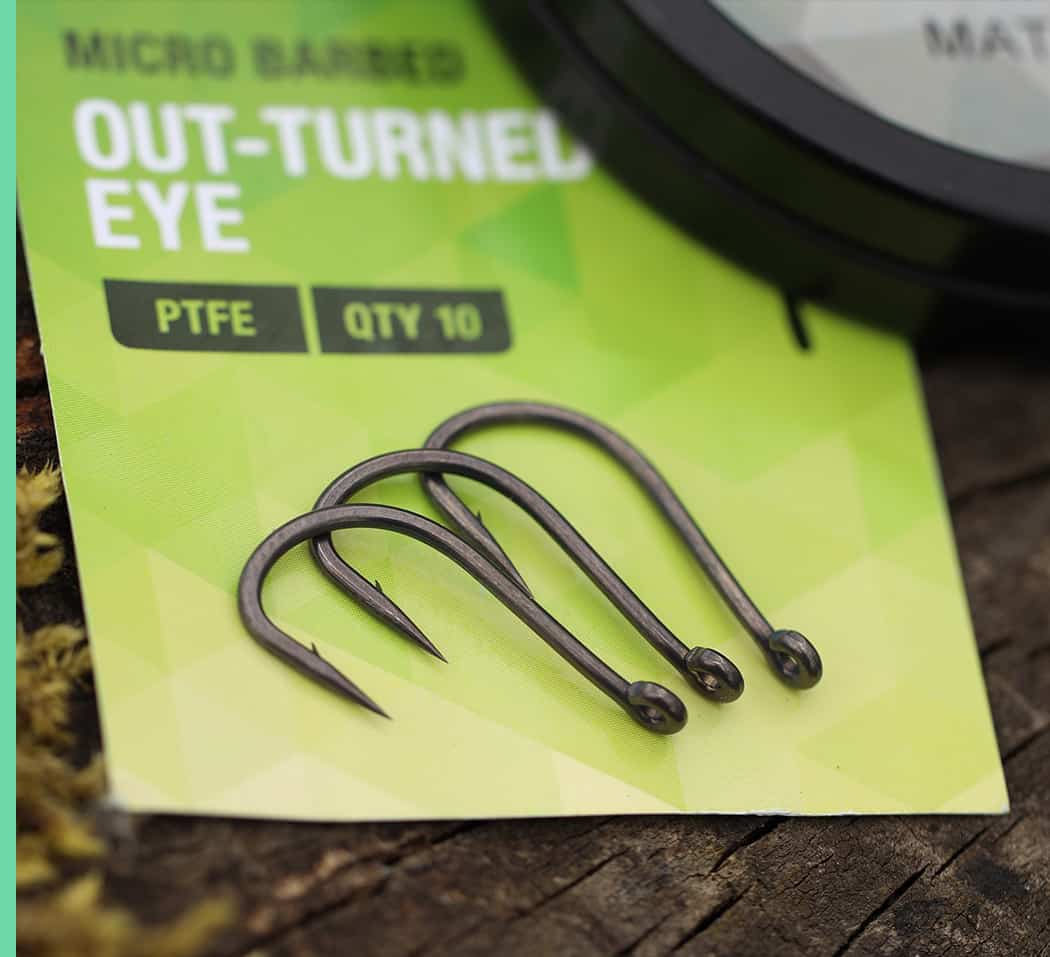
Question 3
With all of this in mind, you must use rigs and tackle to cope with the harsh environment, what end tackle setup is your absolute go to on big pits?
Everything you use on big pits has to be stepped up, you can’t play! Heavy mainline is a must, I use braid a lot of the time, but I have used 20lb mono in the past which is perfect for the job. If you are used to fishing small lakes and use 12lb line and size 8 hooks, you have to almost double it for big pits. The way I look at it, you have to gear up for the biggest and strongest carp in the lake, and imagine you have to land it from a tight swim filled with snags, when you think of it like that you can’t go casting out a little hook on light braid. Everything has to be bigger and stronger.
Personally, I would be confident using any hook in the Thinking Anglers range in a size 4 on a big pit. Either I have caught big carp on them all myself, or my friends have, you can’t get anymore gratification that they are up to the task than that.
When it comes to the actual rigs, I use two or three that I have absolute confidence in. I would never chuck a rod out with a rig I just learnt to tie in a magazine the day before on a big pit especially, it’s just not worth the risk. So, first port of call is to use something you like and have had success with.
I use a pop-up rig, which is a classic stiff hinge and a bottom bait rig, which I either tie with a hair on something like Camstiff in 35lb or as a D-rig using 35lb Think Link. Both rigs I use size 4 Out-Turned Eye or Curve Point hooks on lead clips with big leads, strong leaders and an all-important anti-tangle sleeve. All of my rigs are designed to never tangle on the cast and reset themselves if they get picked up and dropped by nuisance fish or crayfish.
I never do anything complicated with my rigs, and one of the main things I don’t do compared to others is hook sharpening. You just can’t do it in the Cotswolds, the crayfish cause havoc with it, from just dragging your rig along the bottom, to even eating the point itself! So, I avoid hook sharpening at all costs.

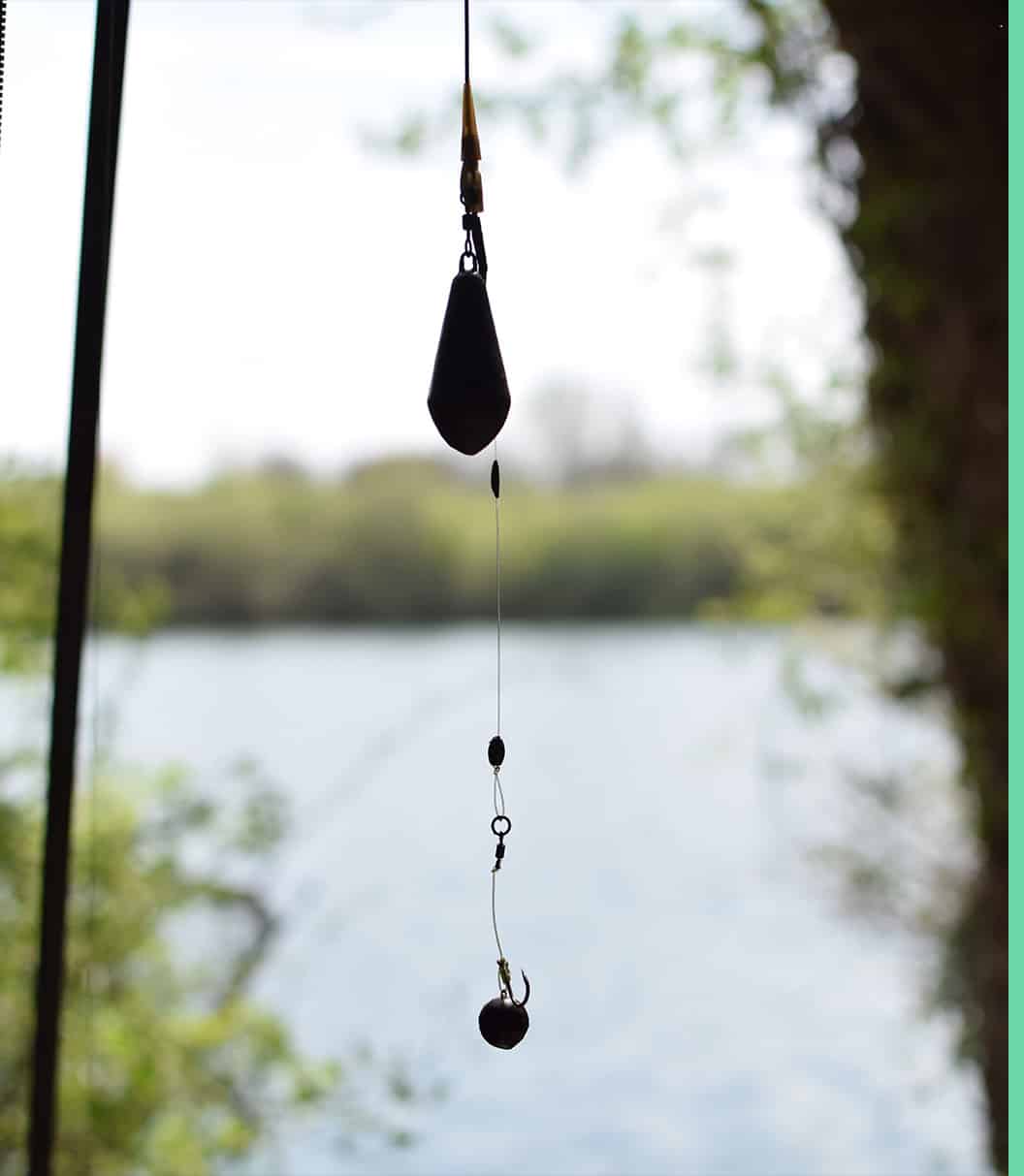
Question 4
Do you have any horror stories where more conventional, subtler rigs have let you down?
Before my time with Thinking Anglers, I obviously used different brands of hooks and picked them up from my local tackle shop. Everyone has their favourites and I had mine, but one day, they vanished off the shelves as they were being redeveloped. I needed hooks, so I picked up another brand’s and cast them out on my next session.
I caught one that night and woke to a huge plume of bubbles over my spot at first light, it was seriously game on. Sure enough, my middle rod ripped off, I had it on for about 20 seconds and it came off. I wound in the rig and the hook point was flat, in fact it was almost facing the wrong way! I was fuming as I never had that problem with my other hooks. While I was sat there thinking what I could do next, my right hander was away and exactly the same thing happened!
The problem was the points on those hooks were too fine and delicate, they just couldn’t stand up to what the big pit threw at them. I much prefer thicker hooks nowadays and very much learnt my lesson; albeit the hard way!
Question 4
Do you have any horror stories where more conventional, subtler rigs have let you down?
Before my time with Thinking Anglers, I obviously used different brands of hooks and picked them up from my local tackle shop. Everyone has their favourites and I had mine, but one day, they vanished off the shelves as they were being redeveloped. I needed hooks, so I picked up another brand’s and cast them out on my next session.
I caught one that night and woke to a huge plume of bubbles over my spot at first light, it was seriously game on. Sure enough, my middle rod ripped off, I had it on for about 20 seconds and it came off. I wound in the rig and the hook point was flat, in fact it was almost facing the wrong way! I was fuming as I never had that problem with my other hooks. While I was sat there thinking what I could do next, my right hander was away and exactly the same thing happened!
The problem was the points on those hooks were too fine and delicate, they just couldn’t stand up to what the big pit threw at them. I much prefer thicker hooks nowadays and very much learnt my lesson; albeit the hard way!

Question 5
When fishing on such large bodies of water,casting a long way can help increase your chances of catching, what advice do you have for people wanting to achieve greater distance in their casting and what equipment do you tend to use?
My biggest piece of advice would be to fish to your own capabilities, in both your own skills and techniques as well as what your gear is capable of. If you can fish at 140 yards, but if the wind gets up a bit you can only hit 130 yards, then what’s the point in fishing at your absolute maximum all the time? There isn’t any! Find a spot at a range that suits you and is comfortable. The same goes for your gear, the last thing you want to do it snap a rod or crack off leaving a live rig in the lake. It is vital you don’t over gun your gear as it could end up in tears.
I use super stiff rods, reasonably cheap big pits and big leads to reach the distance I fish at. I don’t do anything special, and I never drop down so fine that I might jeopardise my catch potential. All I can say is, if you want to fish further out, get some proper gear and practise until your arms hurt!
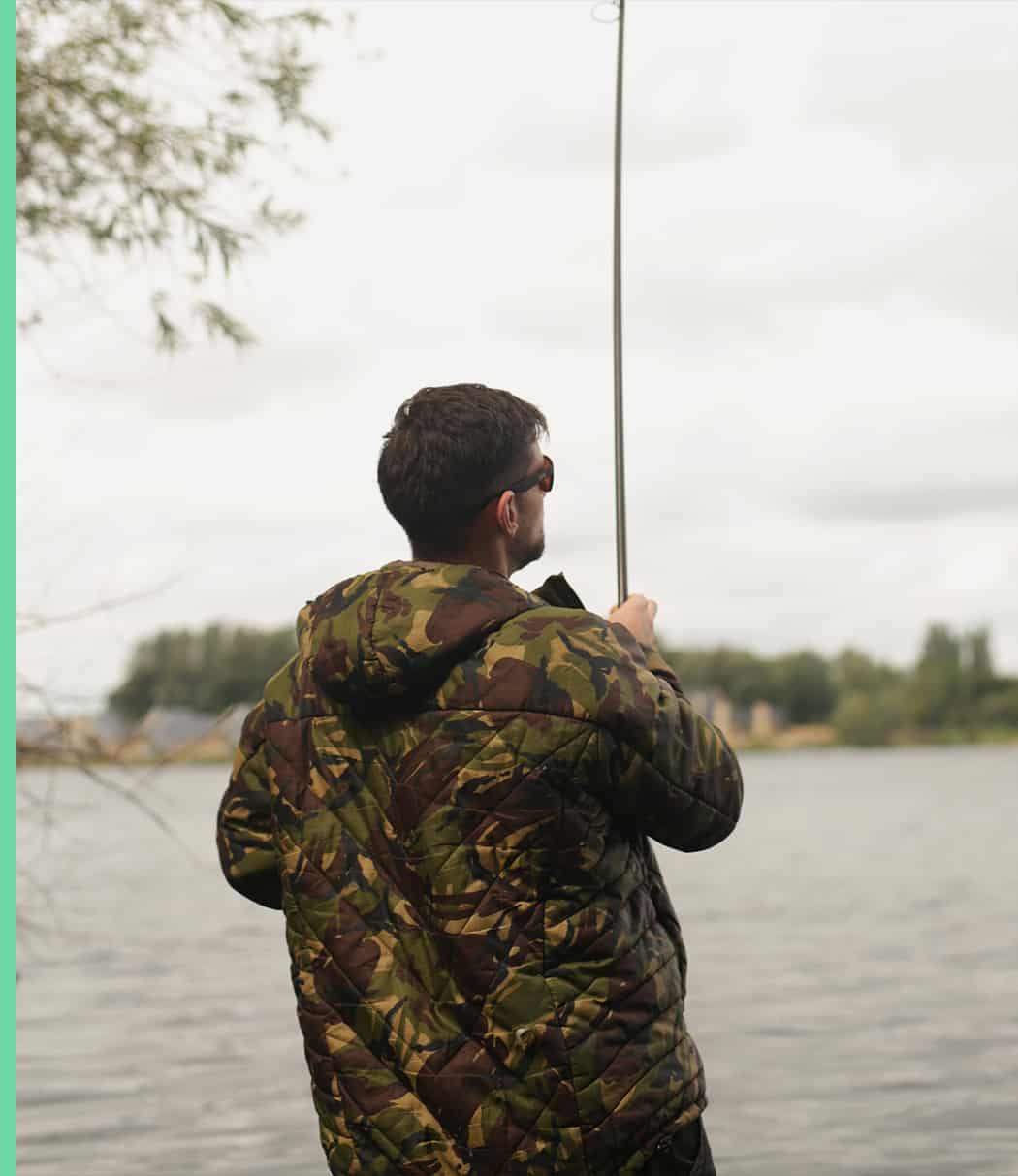
Question 5
When fishing on such large bodies of water,casting a long way can help increase your chances of catching, what advice do you have for people wanting to achieve greater distance in their casting and what equipment do you tend to use?
My biggest piece of advice would be to fish to your own capabilities, in both your own skills and techniques as well as what your gear is capable of. If you can fish at 140 yards, but if the wind gets up a bit you can only hit 130 yards, then what’s the point in fishing at your absolute maximum all the time? There isn’t any! Find a spot at a range that suits you and is comfortable. The same goes for your gear, the last thing you want to do it snap a rod or crack off leaving a live rig in the lake. It is vital you don’t over gun your gear as it could end up in tears.
I use super stiff rods, reasonably cheap big pits and big leads to reach the distance I fish at. I don’t do anything special, and I never drop down so fine that I might jeopardise my catch potential. All I can say is, if you want to fish further out, get some proper gear and practise until your arms hurt!

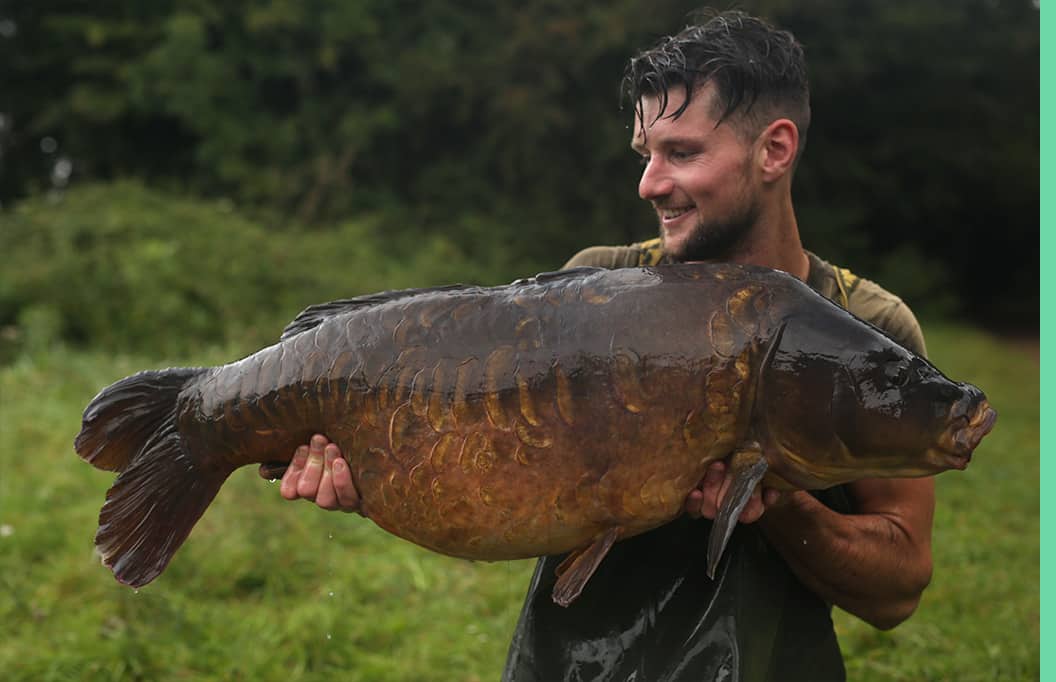
Question 6
What's your favourite capture from a big pit and why?
I have caught some mega carp from some equally impressive big pits over the years, but of course the Croc stands out above them all for me. I won’t bore everyone with the finite details of that one, as there’s a YouTube video and a few other articles about that entire campaign. But that lake taught me an awful lot about big pit angling and I cannot think of a better carp to sit at the pinnacle of my captures during my life. It really is a special carp!
Question 6
What's your favourite capture from a big pit and why?
I have caught some mega carp from some equally impressive big pits over the years, but of course the Croc stands out above them all for me. I won’t bore everyone with the finite details of that one, as there’s a YouTube video and a few other articles about that entire campaign. But that lake taught me an awful lot about big pit angling and I cannot think of a better carp to sit at the pinnacle of my captures during my life. It really is a special carp!

MITCH'S CAPTURES
MITCH'S CAPTURES


